Results 11 to 16 of 16
-
05-29-2012, 05:06 AM #11
-
05-29-2012, 08:40 AM #12Senior Member



- Join Date
- Apr 2008
- Location
- Essex, UK
- Posts
- 3,816
Thanked: 3164
Looks and sounds like a Dalmore Blue to me. They all have different patterning, but the lines are quite unmistakable when they appear to 'cut across' each other. Here are a few examples - wetted, so the colour is much more extreme than when dry:
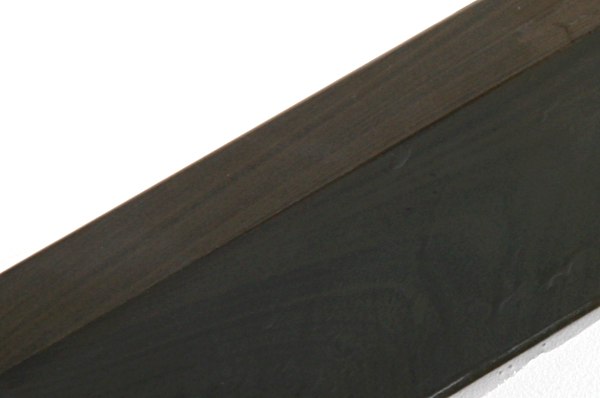
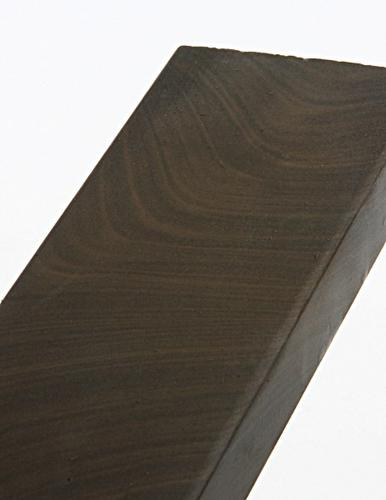
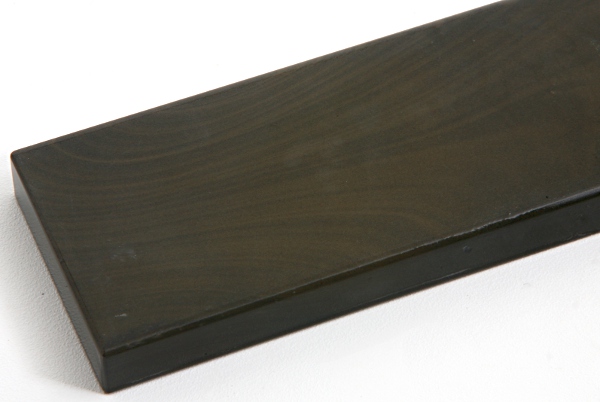
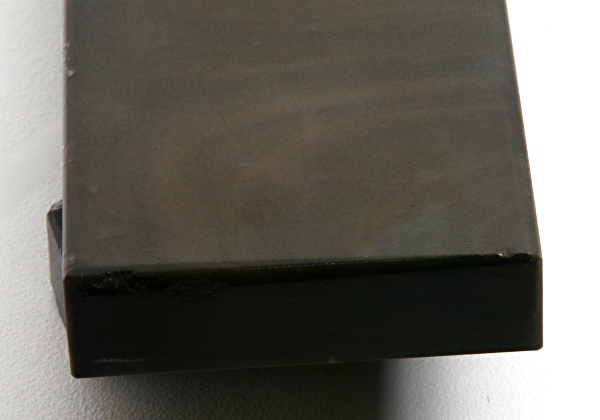
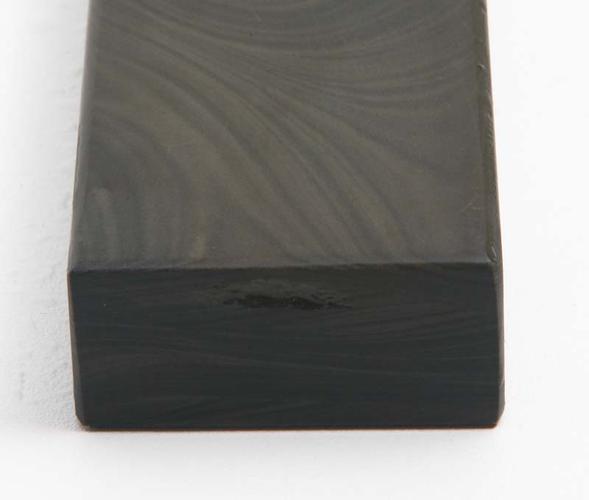
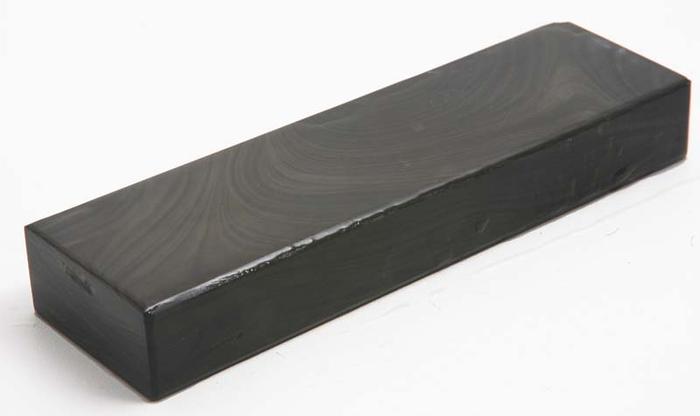
They do not appear to be blue either - at least not to me. I suspect 'blue' is a fanciful term for grey - they look mostly grey when dry, but the green tint predominates when wet or very finely lapped.
The Dalmore Yellow is a much different beast. It is a dra yellow colour and under a lens looks to be an agglomeration of coarse sandy particles - it does tend to release particles during honing to some degree, nicely scratching whatever you are attempting to hone! It's slow and very, very coarse.
Regards,
Neil
-
The Following User Says Thank You to Neil Miller For This Useful Post:
Wolfpack34 (05-29-2012)
-
05-29-2012, 05:16 PM #13

Thanks for the input Neil! I am beginning to be convinced that this stone is in fact a a variation of the 'Dalmore Blue'...when dry it is greyish, especially under ambient light but if you take it outside , or wet it, the olive greenish hue is definitely more pronounced as are the striped patterns.
Could you tell me in your experience what the predominate approximate 'grit range' is for the Dalmore stones...
As I said in my initial post, this seems to be a very fine and dense grit stone (stone weighs in at 700+ grams) that slurry's easily. The slurry is 'milky white', and with slurry it seems to act like my 3-5K Naniwas as far as cutting power. Very smooth cutting but also slow. I can set a bevel with it...but wouldn't do that again because of the time involved...and with just water it acts a lot like my 8K Naniwa...or maybe slightly finer. The shaving edge was very nice (tested it on a vintage Fredricks Sheffield razor) comparable to a hard coticule (like my La Dresante Bleu), and it was definitely improved for the re-shave on a vintage Escher.
If I was going to use it as a progression stone (using Naturals), my guess is that one scenario would be to set the bevel first, then go to the TOS, then this stone(or visa versa), and finish with my Lynn Idwal. Just thinking outloud...
Here are a few pics for comparison, side be side with a TOS and a LI:
Anyway...any additional input would be appreciated.
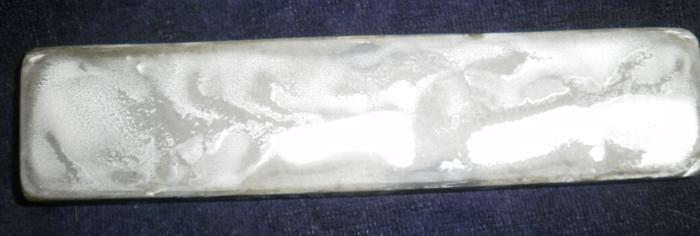
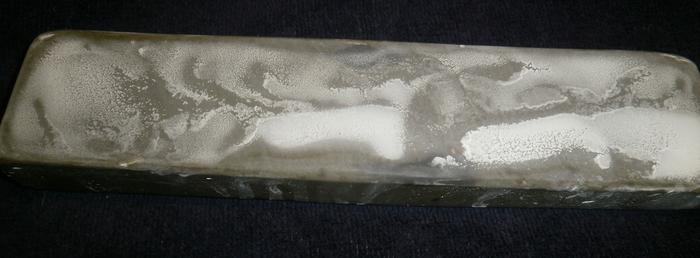
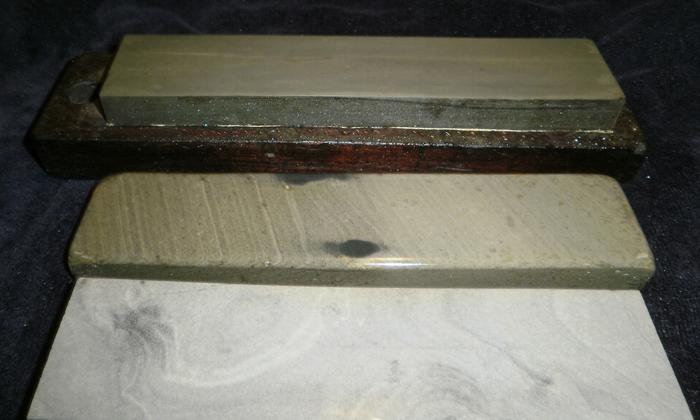
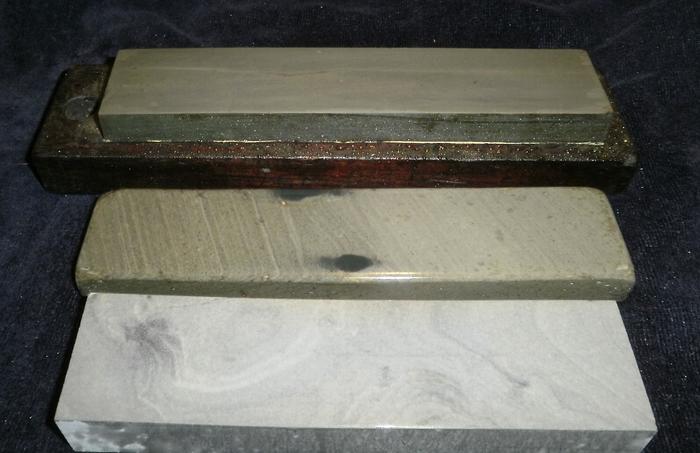
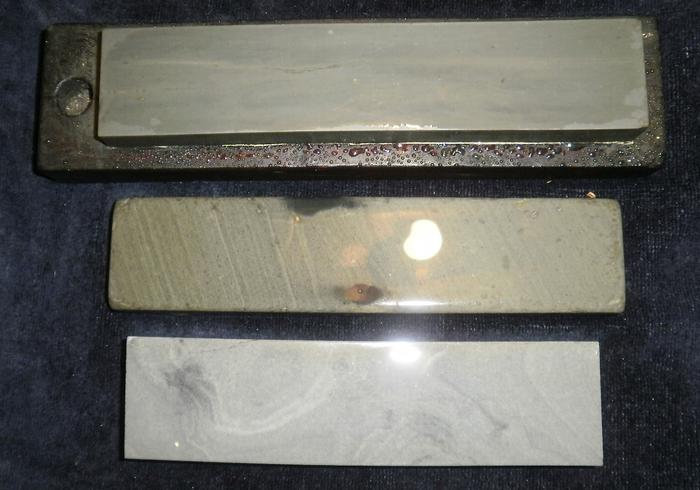
-
05-29-2012, 06:31 PM #14Senior Member



- Join Date
- Apr 2008
- Location
- Essex, UK
- Posts
- 3,816
Thanked: 3164
Hi Wolfpack!
The thing that tends to convince me that yours is some sort of DB is that patterning in the middle of the hone near the two dark inclusions. I haven't seen inclusions like that before, but where the stripe pattern seems to cut through another stripe pattern at an angle is very characteristic - not in the two examples I have shown, but it is a striking and common feature.
I have three examples in front of me at the moment - one is green/grey when dry, getting greener with a hint of yellow in the stripes when wet, the other two are light grey with a tinge of olive green when dry, getting greener when wet. All three are dense, heavy stones. Originally they were sold as 'smooth, fast cutting hones for preliminary edges on knives and penknives prior to final honing'. Which is about right in my opinion. I have had some that were probably as coarse as a 5k hone, and some as fine as an 8k hone, so I usually describe them as being in the 6k - 7k range. Yours looks unlike any other I have seen in terms of colour and with the dark spots, so it is probably a wildcard and could well be finer than the run-of-the-mill ones.
Regards,
Neil
-
The Following User Says Thank You to Neil Miller For This Useful Post:
Wolfpack34 (05-29-2012)
-
05-29-2012, 06:37 PM #15

Here's a pic of some of my DBs. They're porous, the water you put on the stone gets sucked in. It really shows the difference between wet and dry. I don't think they match with yours.
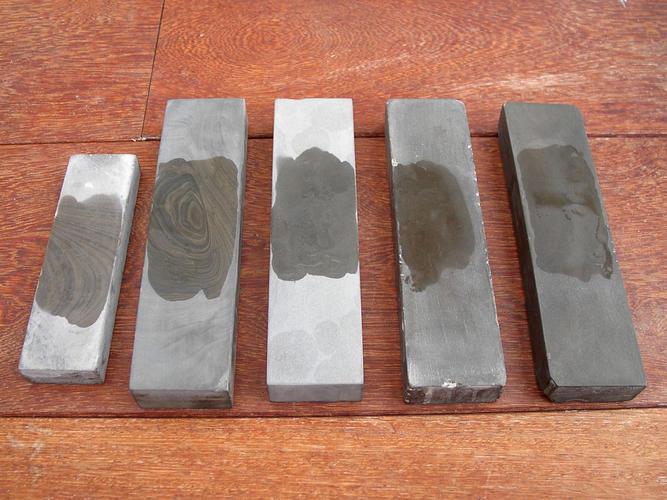
-
The Following User Says Thank You to Piet For This Useful Post:
Wolfpack34 (05-29-2012)
-
05-29-2012, 10:35 PM #16

Neil: Thanks for the additional input...I would also call this stone an 'intermediate finisher', much along the lines of my TOS. I think I will break out a couple of more razors to be honed and do a comparison between this stone and my TOS just to see what that tells me, and I'll finish them on the LI. I'll report what I find out...
Thanks also to you Piet for your thoughts as well. As far as porosity being a factor in DB's Piet, I can tell you that this hone is lapped very smooth ( to 400 grit paper ) and it is not porous at all. About the same as my TOS as far as that goes. It does absorb water, but not very quickly. The water seems to evaporate/absorb slowly rather than 'soak in'.


 LinkBack URL
LinkBack URL About LinkBacks
About LinkBacks






 Reply With Quote
Reply With Quote

